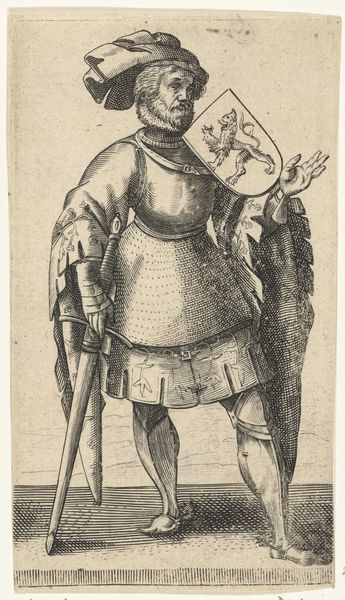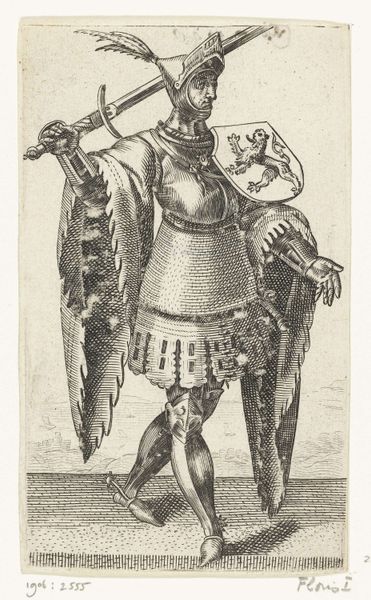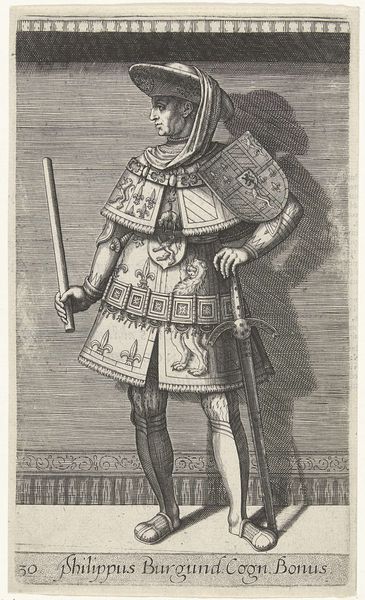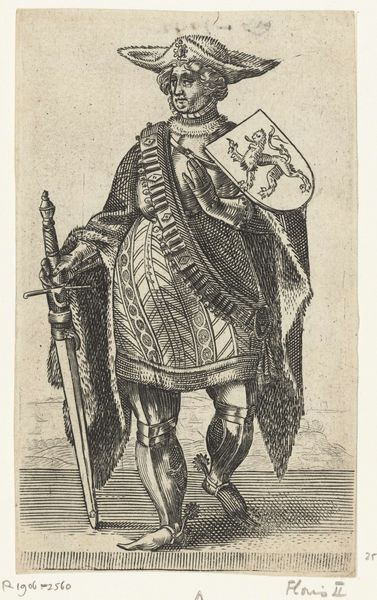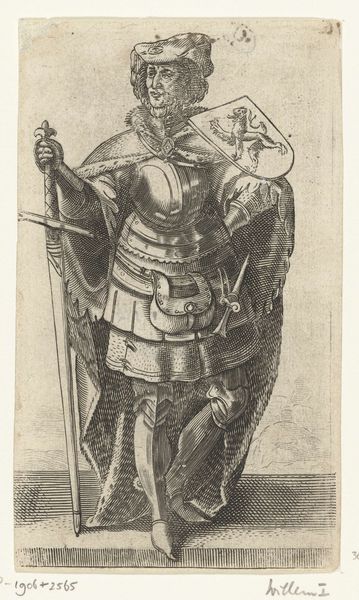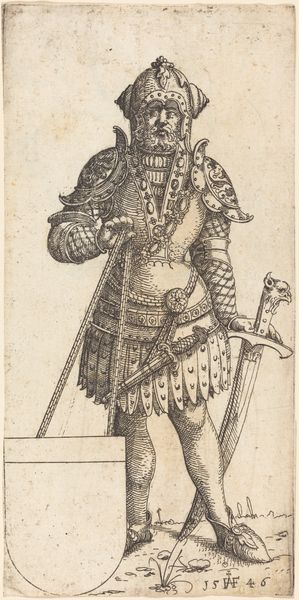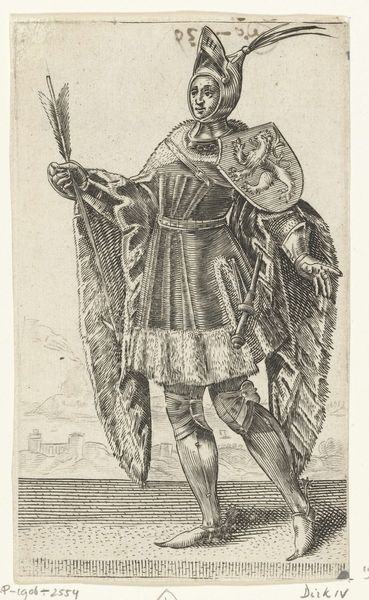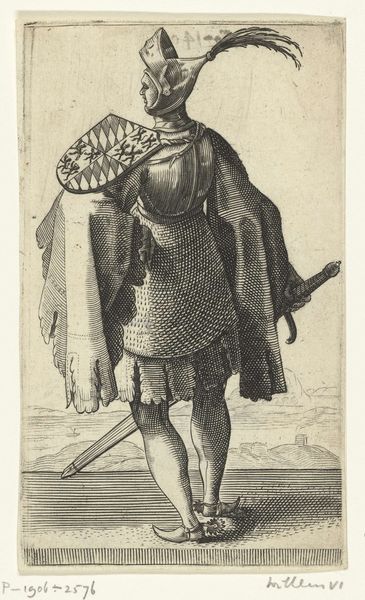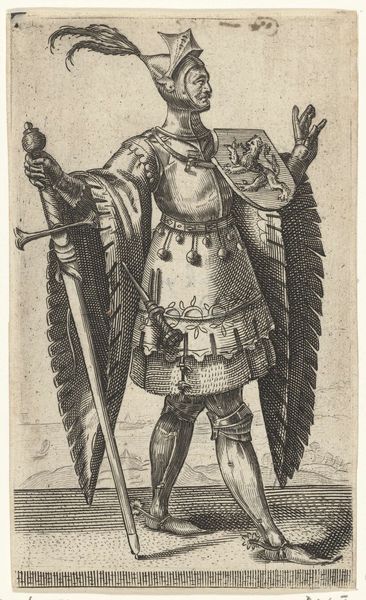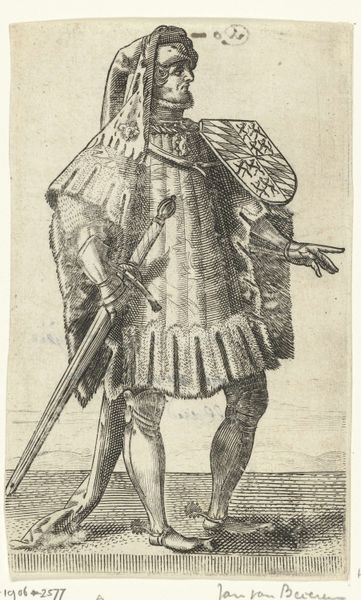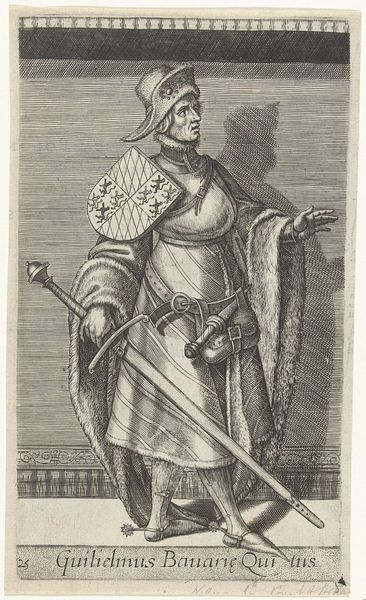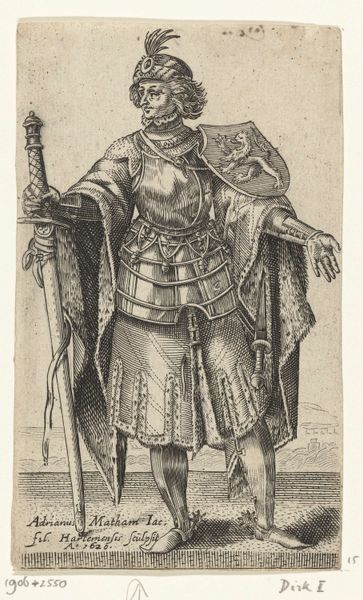
drawing, print, engraving
#
portrait
#
drawing
#
baroque
# print
#
pencil sketch
#
figuration
#
pen-ink sketch
#
engraving
Dimensions: height 130 mm, width 80 mm
Copyright: Rijks Museum: Open Domain
Editor: Here we have Adriaen Matham's 1620 engraving, "Portret van Robrecht I de Fries, graaf van Vlaanderen," housed at the Rijksmuseum. It's fascinating how much detail he managed to capture with just engraving techniques. What strikes you most about this piece? Curator: What I immediately see is the emphasis on materials and the labour involved. The artist meticulously depicts the count’s armor, each plate and joint carefully rendered, but think of the cultural meaning behind these luxury items, crafted by skilled artisans. This portrait becomes a document of not only the Count, but the economy surrounding him. What does it say about labor during the Baroque era? Editor: That's a cool observation. So, beyond just being a picture of a guy in armor, it speaks to broader societal structures and economic realities? Curator: Exactly. Consider the materials themselves – the metal for the armor, the inks for the print. Where did these materials come from? Who mined them? Who processed them? Whose labour afforded this to become such an important symbol of stature in society at the time? These are not neutral objects; they are products of exploitation and a complex web of social relationships. The very act of creating the print involves labor – the engraver’s skill, the printing press, the distribution networks. Editor: I hadn't considered that. So, this portrait becomes less about the individual and more about the processes and power structures that surround him? Curator: Precisely. And this print allows it to be widely consumed and distributed which inherently challenges traditional notions of fine art versus mass production. What would you say this allows us to learn? Editor: It highlights how intertwined art, labor, and economics truly are, even centuries later. It kind of changes how you look at portraits. Thank you! Curator: My pleasure! It seems Matham subtly challenged what ‘high art’ was perceived as then, which many may fail to understand today.
Comments
No comments
Be the first to comment and join the conversation on the ultimate creative platform.
